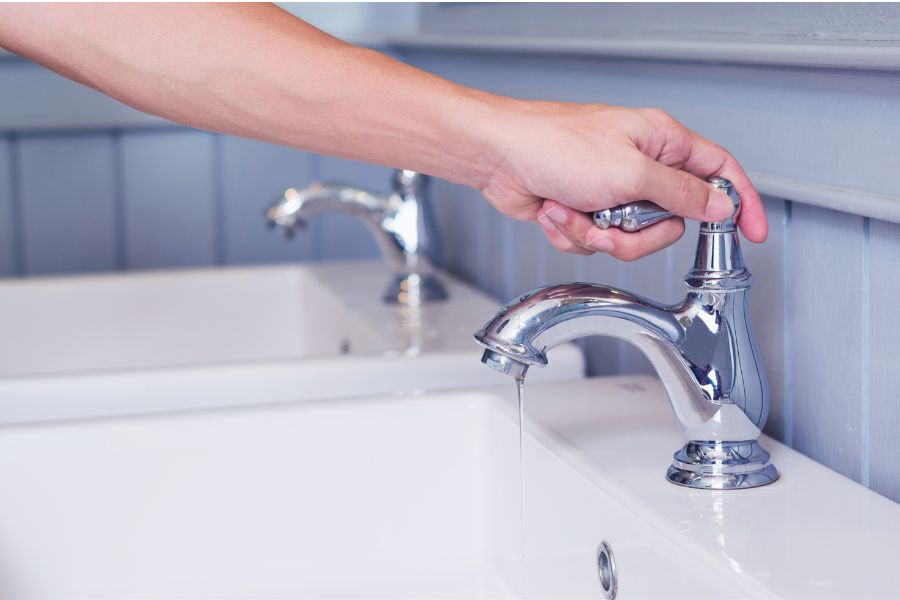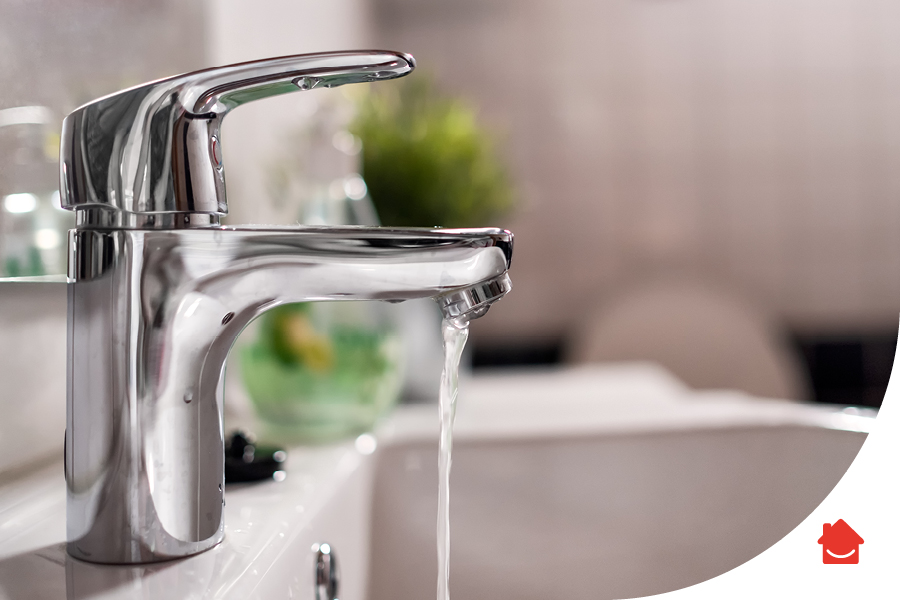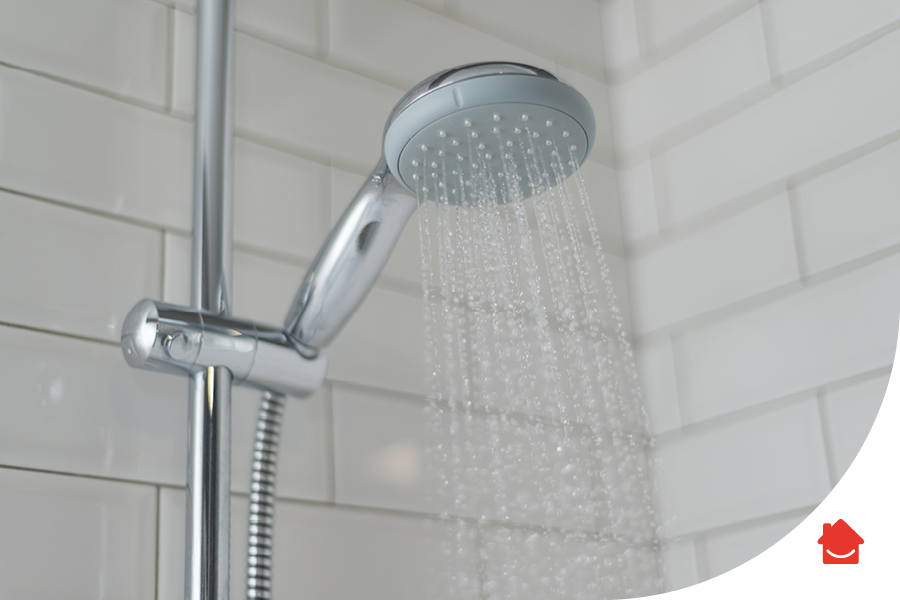When a bathroom or kitchen tap starts dripping, what starts as a minor annoyance can quickly turn into a costly and property-damaging problem if it’s left too long.
However, fixing a leaking tap is an easy, basic skill every homeowner should be keen to learn—just like bleeding a radiator.
We’re here to show you how to fix a leaking tap in a simple, step-by-step fashion. Whether it’s a traditional tap, a mixer tap or a tap with ceramic discs that’s leaking, we’ve got you covered!
What tools do I need to fix a dripping tap?
Gather and keep all of your tap repair tools in one place for ease of access if a leak should occur. You will need the following:
- Adjustable spanner
- Flathead and cross-head screwdrivers
- Scissors
- Replacement cartridge or assorted washers and O-rings
- Allen key (in some cases)
- Soft cloth or masking tape (optional), this will help to protect the finish of your taps from scratches
Top tip: Don’t over-tighten a washer or valve when reassembling. This may damage or cause excess stress on the joint
How to fix a dripping traditional tap

If you have separate hot and cold taps that each need turning more than a quarter turn to achieve a full flow of water, this means that you’ve got traditional taps (also known as compression valve taps).
Follow these simple steps to fix a dripping compression valve tap:
1. Turn the water supply off
Locate the isolation valve often found on the pipes underneath or close to your sink and use your screwdriver to turn this off.
If your sink doesn’t have an isolation valve, or you can’t find it you should turn your water off at the stopcock instead. This can usually be found under your kitchen sink.
2. Make sure that no water is coming out of the taps
To remove the tap cover you are looking for the screw underneath.
You can usually unscrew these caps by hand, or with a flathead screwdriver but in some cases, you may need to use an Allen key.
3. Remove the tap cover
Different taps may have different types of cap or cover. You are looking for the screw underneath. If you have decorative hot and cold caps, you may find the screw beneath those. On a single lever tap, check below the hot and cold indicator.
You can usually unscrew these caps by hand, or with a flathead screwdriver. In some cases you may need to use an Allen key.
4. Remove the tap handle and dismantle the valve
You should now be able to see the screw at the top of the tap head. You’ll need to loosen it completely to get inside the valve and make repairs.
Although there are different types of compression tap valve covers, the process for dismantling the tap head is the same for both types:
- Unscrew the top screw with a crosshead screwdriver
- Use an adjustable spanner to loosen the valve inside, then remove it
- Remove the nut that holds the washer in place
- Hold the valve steady with the adjustable spanner, and use a screwdriver to remove the screw that holds the washer in place
Top tip: Lay all of the items removed on the side of the sink or a towel, in the order that you took them off. This will make it easier to reassemble your tap once you’ve fixed it.
5. Check the tap seating
Run your finger inside the tap to check the tap seating. You can identify a damaged or worn-out tap seat by small canals eroded into the metal of the seat. To fix this:
- Use a seat grinder tool to grind the rest of the seat down to the level of these canals. This will produce a flat, smooth seat for the washer to sit on, and a better seal to stop the flow of water.
- Buy a seat insert kit. This adds a new piece to your tap seating to form a new seal.
If the tap seat is eroded, and you’ve carried out one of those two fixes, try putting your tap back together. Turn your water back on and test the drip—you may find it was the seat and not the washer that was the issue.
6. Check and replace your tap washer
The next element to check is your tap washer. Examine this for wear and tear, and replace it if necessary.
7. Reassemble your tap
Once you’ve reassembled your tap, turn on the water and check for any drips. With the seat and the washer checked and/or fixed, there should be no more leaks.
How to fix a dripping ceramic disc tap
Some modern taps turn only a quarter of the way. These can often be identified as ceramic disc taps.
Top tip: When fixing a ceramic disc tap it’s best to remove the ceramic disc valve and take them to a plumbing merchant or DIY store. This will ensure you purchase a like-for-like replacement.
1. Isolate the water with a screwdriver
Locate the isolation valve often found on the pipes underneath or close to your sink. Use your screwdriver to turn this off.
If your sink doesn’t have an isolation valve, or you can’t find it, turn your water off at the stopcock. This can usually be found under your kitchen sink.
2. Make sure that no water is coming our of the taps
Run the tap until there’s no more water left. Your taps must be completely drained before you can take apart the dripping tap. Remember to plug your sink afterwards, to prevent losing any small parts.
3. Remove the tap head
There are thousands of different styles of ceramic disc taps, but all will have removable tops, or ‘headgear’, as plumbers call it. Check around the headgear for ways in as there are a few different ways you can do this.
- Unscrew the inside screw: Either with a crosshead screwdriver or an Allen key
- Lift off the headgear, or unscrew the valve cover: Once that’s done you can lift off the entire headgear or unscrew the valve cover—depending on the style of your tap. If it’s stiff, use an adjustable spanner to help unscrew it.
- Unscrew the hexagonal nut at the neck of the valve: ou can do this using an adjustable spanner. This might also be stiff, so grab the body of the tap or spout to make sure it doesn’t turn—otherwise, you could damage the pipework underneath.
- Remove the entire ceramic disc valve: This is sometimes known as a cartridge. If it looks cracked or worn, you’ll need to replace it. These come left or right-handed, so bear this in mind when you get the replacement.
- Put the tap back together: Secure the valve and put the tap back together in reverse order.
How to stop a leaking spout
Mixer taps have moveable spouts that may drip or leak from the bottom. If this happens, it’s likely to be your O-ring that needs replacing at the bottom of the spout, rather than a mixer tap washer replacement.
This can be done in 6 simple steps:
- Use a box spanner to loosen the nut that holds the tap to the sink from below
- Twist the tap around to give you better access, then use a screwdriver to remove the grub screw
- Lift the spout out to give you access to the O-ring—the rubber ring at the base of the spout
- Use a flathead screwdriver to loosen the O-ring and slide it off, or just snip it off with a pair of scissors
- Roll the replacement O-ring into position
- To replace the spout, line up the marker on the spout with the groove in the tap body and slot the spout back into position. Secure the tap in place by re-tightening the grub screw and the nut underneath the sink
Common questions about leaking taps
Is a dripping tap dangerous?
Although not immediately dangerous, if left unfixed a dripping tap can cause water to pool leading to the growth of harmful mould. There is also the potential for water damage to the surrounding floorboards and cabinets making them weaken and rot alongside stress on the plumbing system.
Will a dripping tap get worse?
A dripping tap can get worse over time. The longer it is left, the more issues it can cause, especially if you’re continuing to use the tap. This can also lead to a more costly repair so it’s best to fix your leaking tap as soon as you can.
Is a dripping tap an emergency?
If the water is only dripping, is contained to flow down your sink, and doesn’t cause any immediate danger then it’s not classed as a plumbing emergency.
If you’re unable to fix the leaking tap yourself, you can always call on a professional plumber to repair it for you.
How much water does a dripping tap waste?
If you tap drips every second, you could be wasting approximately four litres of water a day. That’s almost enough to fill a bath! It’s easy to see how a dripping tap could be costly over time if left unchecked.
Is your leaking tap still giving you grief?
If you’ve followed our step-by-step guides and are still experiencing a problem with leaking taps or pipes, our professional plumbing engineers are here to help.
Let us put an end to the annoyance and restore peace to your plumbing. Get in touch with HomeServe today for a swift, effective solution.




